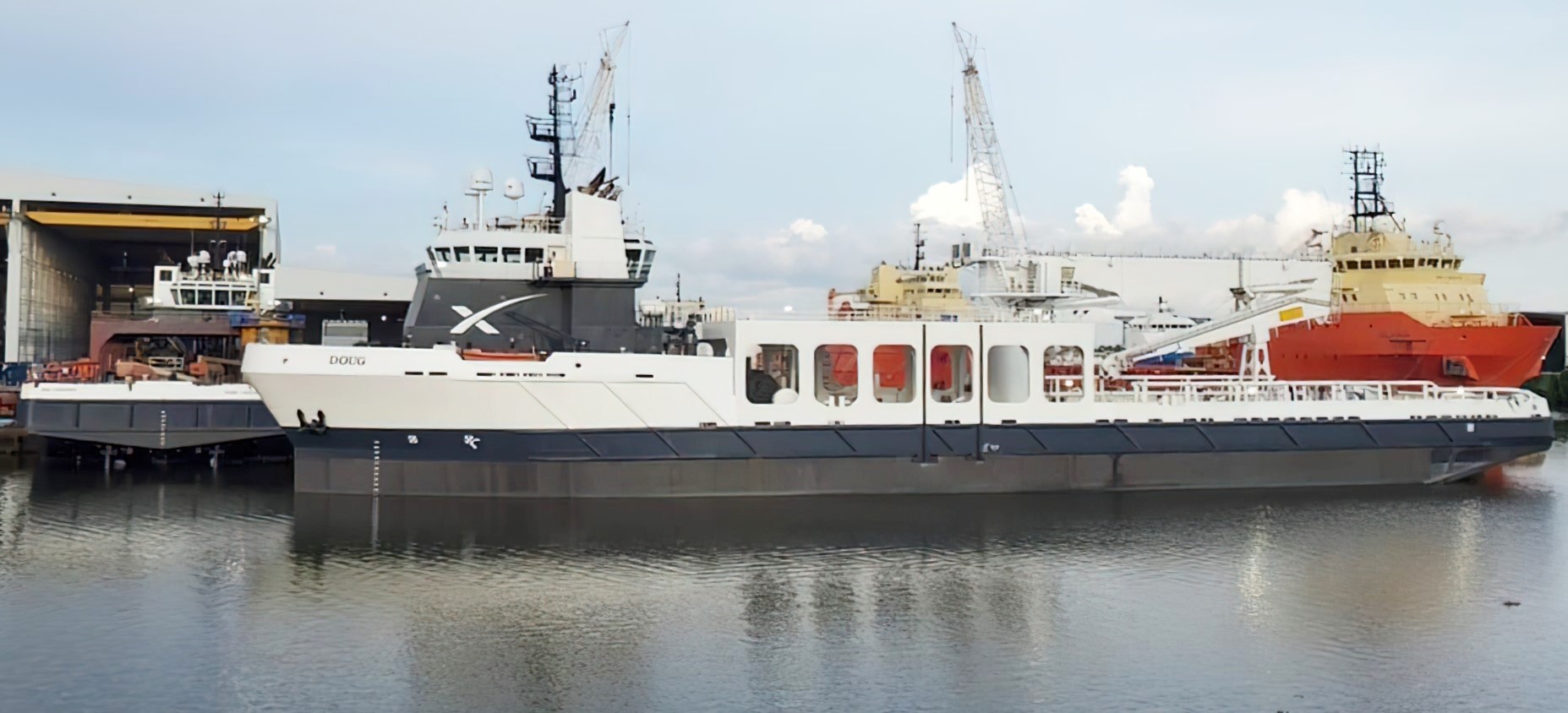

News
SpaceX’s fleet of rocket recovery ships is about to get even bigger
Four months after SpaceX gave up on catching Falcon fairings and stripped and returned a pair of leased ships it had modified for that purpose, the company’s permanent fairing recovery solution has just come into focus.
The April 2021 departure of GO Ms Tree (formerly Mr. Steven) and GO Ms Chief from SpaceX’s East Coast fleet made it unambiguously clear that the company was abandoning fairing catching in favor of simply scooping the several million dollar nose cone halves off of the surface of the ocean. By the time that decision was made, SpaceX had reused fairing halves more than two dozen times on more than 15 Falcon 9 launches – practically none of which had actually been caught by Ms Tree or Ms Chief.
In fact, SpaceX had already begun to reuse ‘scooped’ fairing halves on commercial Falcon 9 launches, including two Transporter rideshare missions with dozens of different customers and SiriusXM’s SXM-7 multimillion-dollar geostationary communications satellite. Perhaps even more importantly, SpaceX was routinely flying splashdown fairing halves three or even four times and flew one particular half twice in just 49 days.
Put simply, thanks to the heroic and somewhat unexpected success of a small subset of SpaceX’s fairing recovery, waterproofing, design improvements, and refurbishment upgrades got so good even fairings that splashed down in the Atlantic Ocean could be rapidly reused and flown multiple (now 5+) times apiece. Onto its third consecutive year of only marginal success and a distinct lack of reliability, that meant that SpaceX’s long-struggling effort to catch Falcon fairings had effectively been made redundant.
While it’s likely that scooped fairing halves would never be certified to fly high-value US military or NASA payloads, SpaceX appears to have matured the technology to the point that it’s good enough for Starlink and many (if not most) of its private-sector launch customers. Along those lines, with Ms Tree and Ms Chief out of the picture by early April, SpaceX had to briefly shoehorn Dragon recovery ships GO Navigator and GO Searcher into scooping roles to continue recovering fairings and eventually decided to lease or rent two far larger ships with built-in deck cranes.
For whatever reason, those leases or rentals only lasted a handful of weeks apiece and the latest ship – Hos Briarwood – departed SpaceX’s fleet in early July. In an extremely rare impromptu hiatus, SpaceX hasn’t launched once since late June, likely explaining why Briarwood – with a 100% fairing recovery success rate over two missions – departed when it did.
Now, first reported by SpaceExplored.com, the first signs of SpaceX’s long-expected permanent fairing recovery solution have appeared at an obscure Louisiana drydock. By all appearances, for the first time in its history, SpaceX has outright purchased two decade-old offshore supply ships formerly known as Ingrid and Ella G. Thankfully, SpaceX wiped clean any hint of ambiguity with the installation of a classic SpaceX “X” and by renaming the ships “Bob” and “Doug” after the pair that became the first NASA astronauts to ride a Falcon 9 rocket and Crew Dragon spacecraft to orbit in May 2020.
Relative to any of SpaceX’s more permanent fleet, including ex-members Tree and Chief, Bob and Doug are massive ships, measuring more than 80m (260 feet) long. They’re also five or six times heavier than the likes of GO Searcher or Ms Tree. Aside from an obvious potential role as fairing ‘scoopers’ thanks to the installation of large deck cranes, Bob and Doug also appear to have had heavy-duty winches installed, implying that they could also double as drone ship towboats.
Potentially, that means that SpaceX could shrink the fleet of ships needed to support each drone ship booster landing from two to one, using Bog and Doug to both tow and service the landing platforms at sea.
News
Tesla Robotaxi has already surpassed Waymo in this key metric
Tesla Robotaxi has already overtaken Waymo in Austin in one key metric, but there’s still more work to do.

Tesla Robotaxi has already surpassed Waymo in one extremely important key metric: size of service area.
Tesla just expanded its service area in Austin on Monday morning, pushing the boundaries of its Robotaxi fleet in an interesting fashion with new capabilities to the north. Yes, we know what it looks like:
🚨 Tesla’s new Robotaxi geofence is…
Finish the sentence 🥸 pic.twitter.com/3bjhMqsRm5
— TESLARATI (@Teslarati) July 14, 2025
The expansion doubled Tesla Robotaxi’s potential travel locations, which now include the University of Texas at Austin, a school with over 53,000 students.
The doubling of the service area by Tesla has already made its travel area larger than Waymo’s, which launched driverless rides in October 2024. It became available to the public in March 2025.
According to Grok, the AI agent on X, Tesla Robotaxi’s current service area spans 42 square miles, which is five square miles larger than Waymo’s service area of 37 square miles.
Tesla Robotaxi (red) vs. Waymo geofence in Austin.
Much can be said about the shape… but the Robotaxi area is now ~3.9 mi² (10 km²) larger than Waymo’s!! pic.twitter.com/dVfh2ODxJC
— Robin (@xdNiBoR) July 14, 2025
The service area is one of the most important metrics in determining how much progress a self-driving ride-hailing service is making. Safety is the priority of any company operating a ride-hailing network, especially ones that are making it a point to use autonomy to deploy it.
However, these companies are essentially racing for a larger piece of the city or cities they are in. Waymo has expanded to several different regions around the United States, including Arizona and Los Angeles.
Tesla is attempting to do the same in the coming months as it has already filed paperwork in both California and Arizona to deploy its Robotaxi fleet in states across the U.S.
As the platform continues to show more prowess and accuracy in its operation, Tesla will begin to expand to new areas, eventually aiming for a global rollout of its self-driving service.
News
Tesla Megapacks arrive for massive battery replacing coal plant
Tesla Megapacks have started arriving on-site to the Stanwell Battery Project, just as Queensland prepares to wind down the Stanwell coal plant.
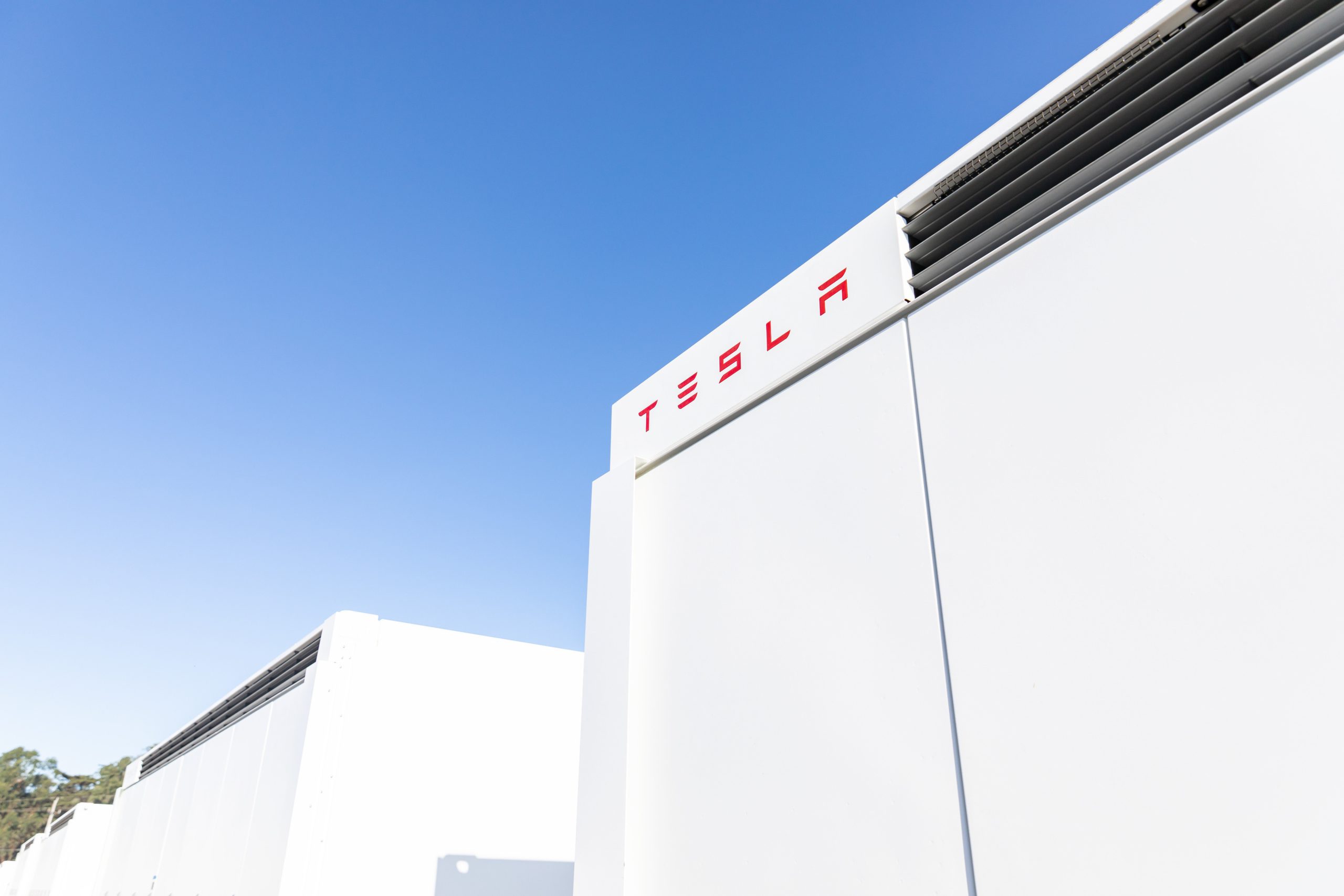
The first of over 300 Tesla Megapacks have arrived to the site of a massive battery energy storage system (BESS) being built in Australia, dubbed the Stanwell Battery Project after a coal plant it’s set to replace.
In a press release last week, the Stanwell Battery Project announced that the first Tesla Megapack 2XL units had arrived to the site, which is located outside of Rockhampton in Queensland, Australia. The project will eventually feature 324 Megapack units, set to arrive in the coming months, in order to support the 300MW/1,200MWh battery project.
“The Stanwell Battery is part of the diversification of our portfolio, to include cleaner and more flexible energy solutions,” said Angie Zahra, Stanwell Central Generation General Manager. “It is just one part of the 800 MW of battery energy storage capacity we have in our pipeline.
“Capable of discharging 300 MW of energy for up to four hours (1,200 MWh), our mega battery will be one of the largest in Queensland.”
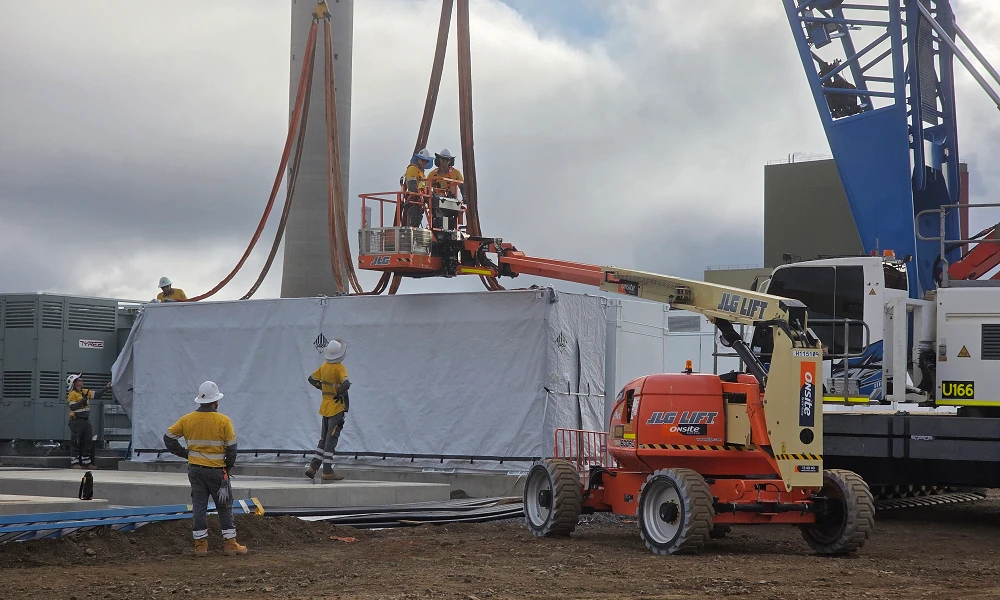
Credit: Stanwell
Did you know Tesla’s Lathrop facility churns out a Megapack every 68 minutes? That’s enough energy to power 3,600 homes for an hour per unit! ⚡️ pic.twitter.com/bG6fpHkB9O
— TESLARATI (@Teslarati) June 11, 2025
READ MORE ON TESLA MEGAPACKS: Tesla Lathrop Megafactory celebrates massive Megapack battery milestone
The state is working with government-owned company Yurika to facilitate construction, and the process is expected to create roughly 80 jobs. The project is expected to come fully online in May 2027, with initial commissioning of the Megapacks aiming for November 2025.
The Stanwell Battery is set to replace the nearby Stanwell coal generation plant, which the government is planning to wind down starting in 2026 as part of efforts to reach an 80 percent renewable energy generation ratio by 2035. Meanwhile, the government is also set to begin winding down the Tarong and Callide coal plants, while several other Megapack projects are being built or coming online. o ya
Tesla currently has two Megapack production facilities, located in Lathrop, California, in the U.S. and another that came online earlier this year in Shanghai, China. The Shanghai Megafactory shipped its first units to Australia in March, while both factories are expected to be capable of producing 10,000 Megapack units per year upon reaching volume production.
News
The Tesla Diner is basically finished—here’s what it looks like
The company first broke ground on the Diner, Drive-in, and Supercharger location in September 2023. Now, it has served one of its first internal customers.

Tesla has finally completed the construction of its highly anticipated Diner, Drive-in, and Supercharger in Los Angeles, and recent photos of the interior’s “retro-futuristic” style are making their way around the internet.
X user Brad Goldberg shared photos from the Tesla Diner site last Tuesday, depicting some of the Supercharger stalls, indoor and outdoor seating areas, multiple neon lights, and even an Optimus robot. Goldberg also noted that there had been a “flurry of activity on site” while he was snapping the photos last week, suggesting that the restaurant location could be getting close to opening.
The Tesla Diner also served one of its first internal customers in the past few days, as Elon Musk posted on X on early Monday morning that he had just finished up eating a meal at the site:
I just had dinner at the retro-futuristic Tesla diner and Supercharger.
Team did great work making it one of the coolest spots in LA!
The photos also show that the site is pretty much done, with some of them even showing vehicles charging at the charging stalls.
You can see some of the latest photos of the Tesla Diner below.
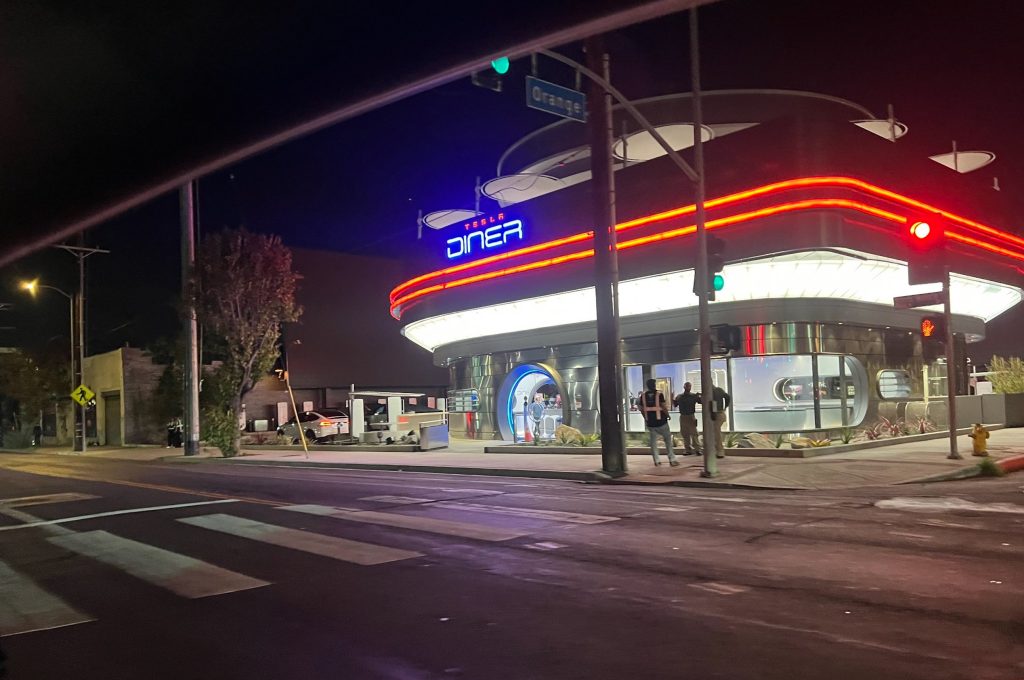
Credit: BradGoldbergMD | X
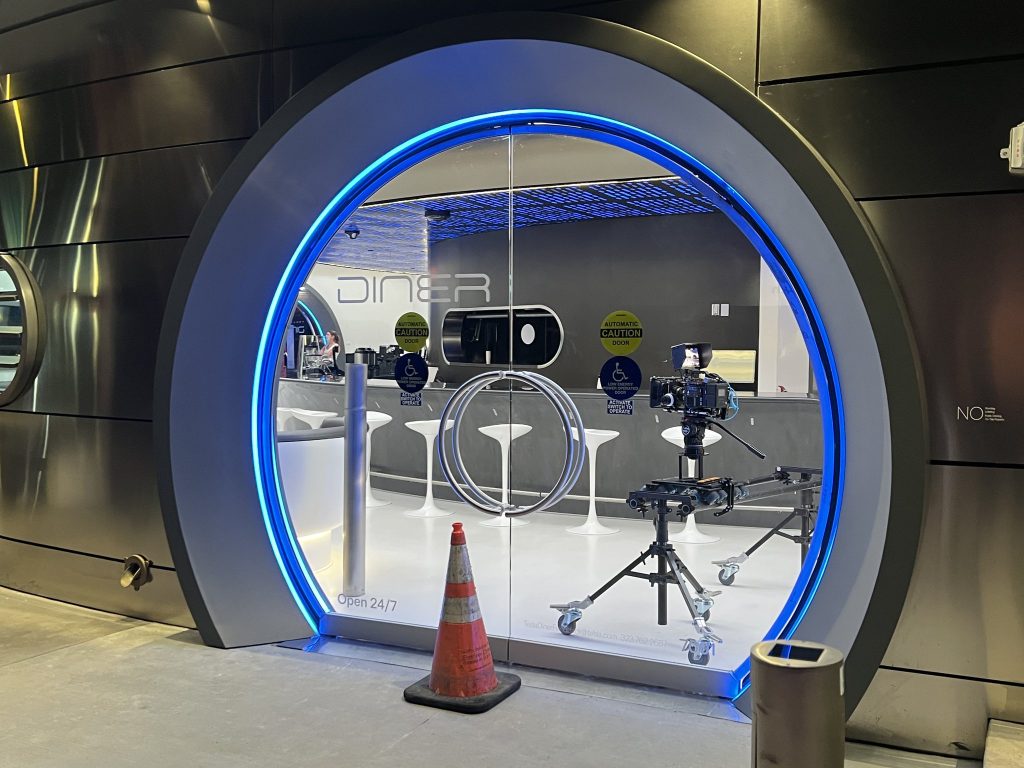
Credit: BradGoldbergMD | X
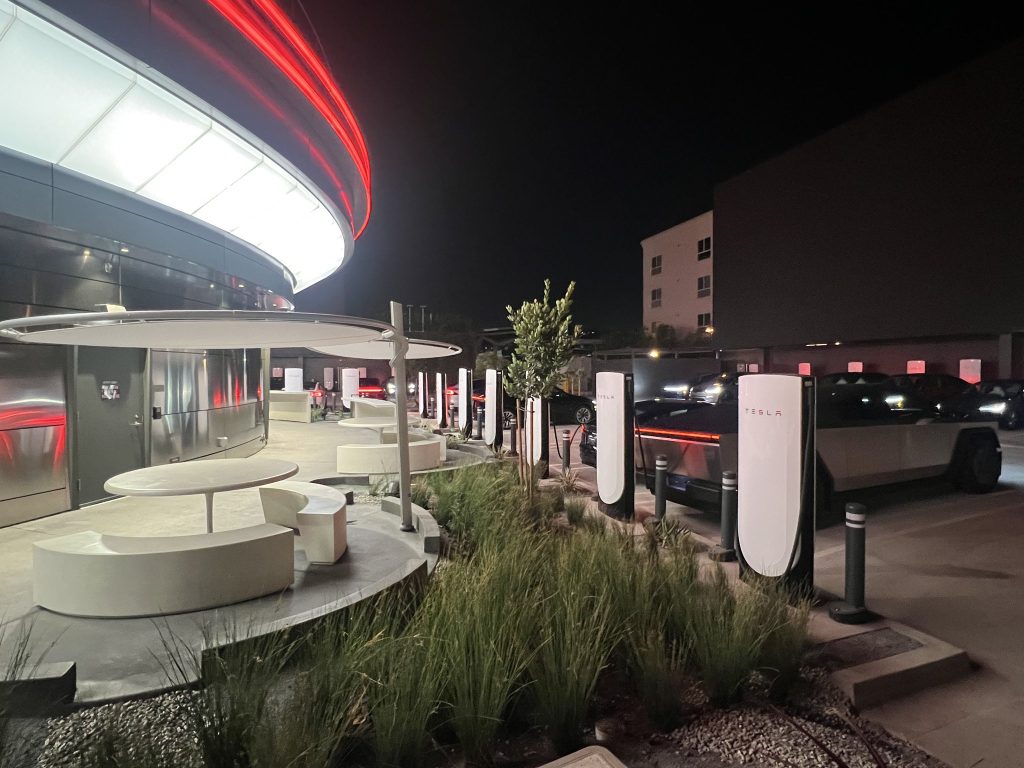
Credit: BradGoldbergMD | X
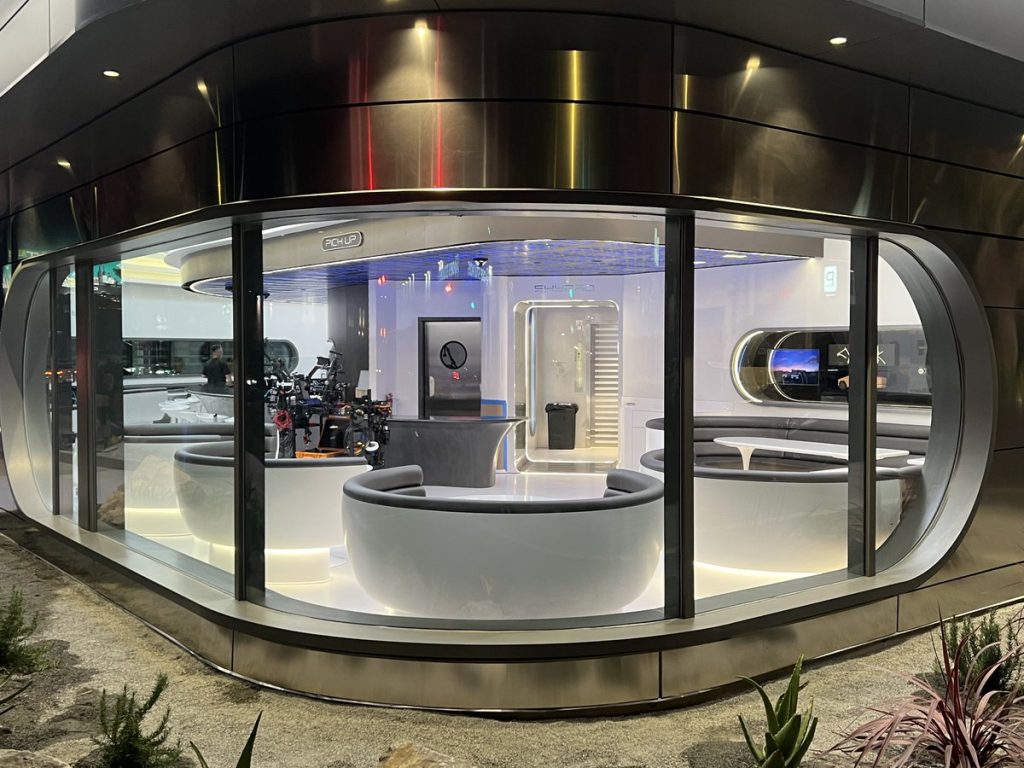
Credit: BradGoldbergMD | X
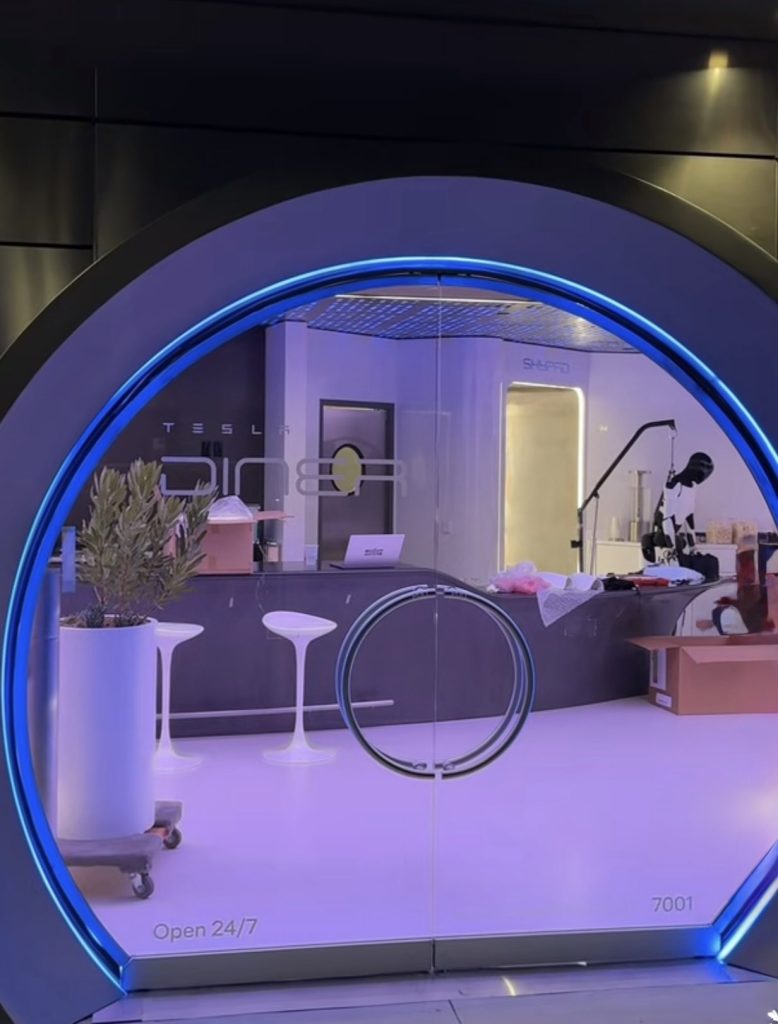
Credit: TeslaKing420 | X
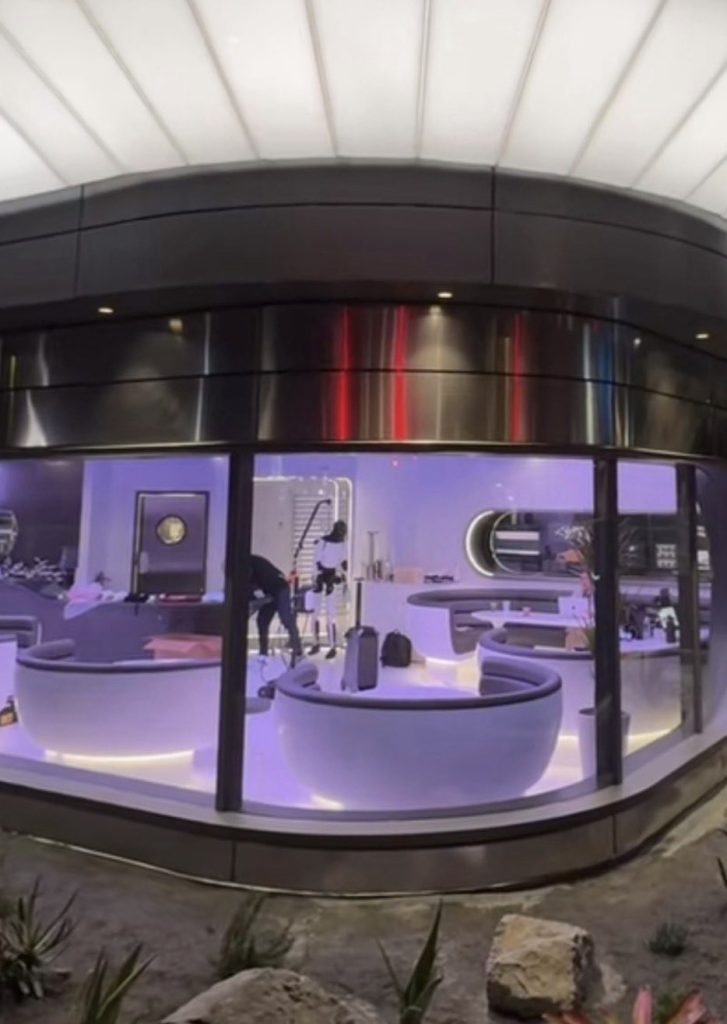
Credit: TeslaKing420 | X
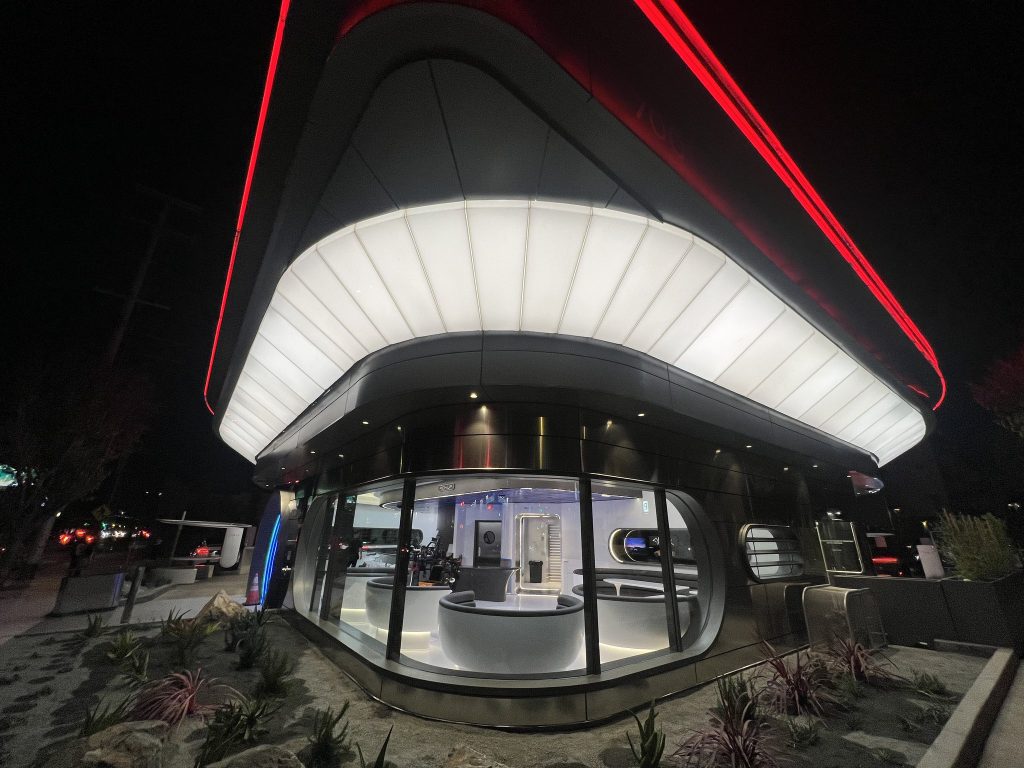
Credit: Brad Goldberg (via Sawyer Merritt on X)
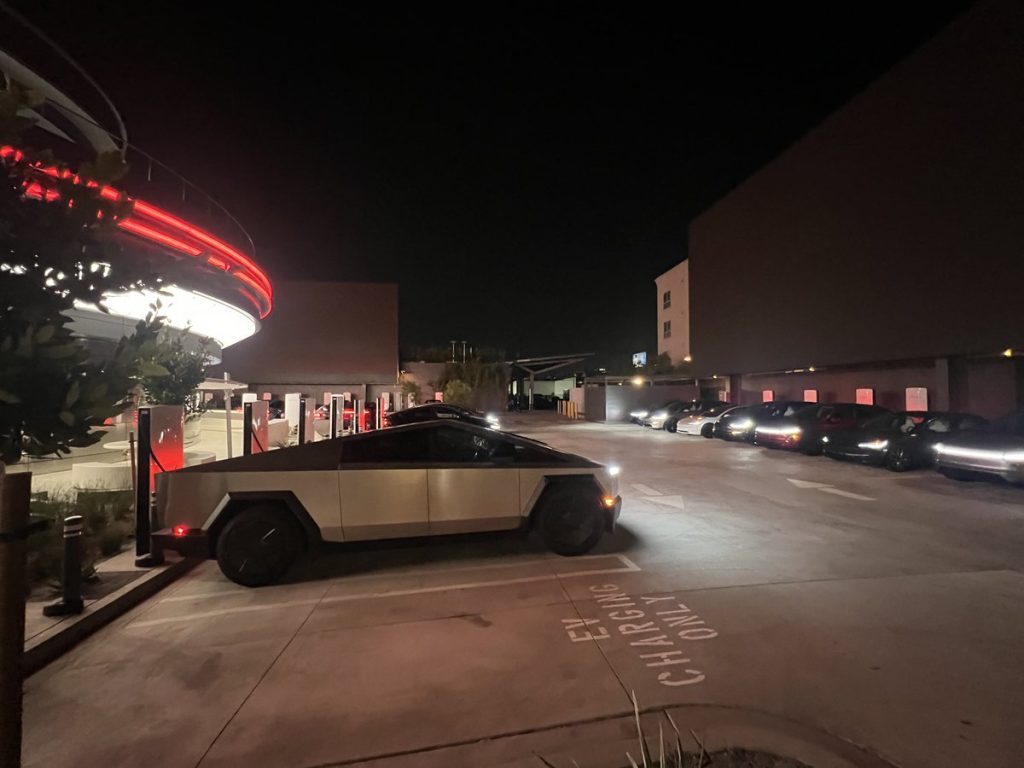
Credit: Brad Goldberg (via Sawyer Merritt on X)
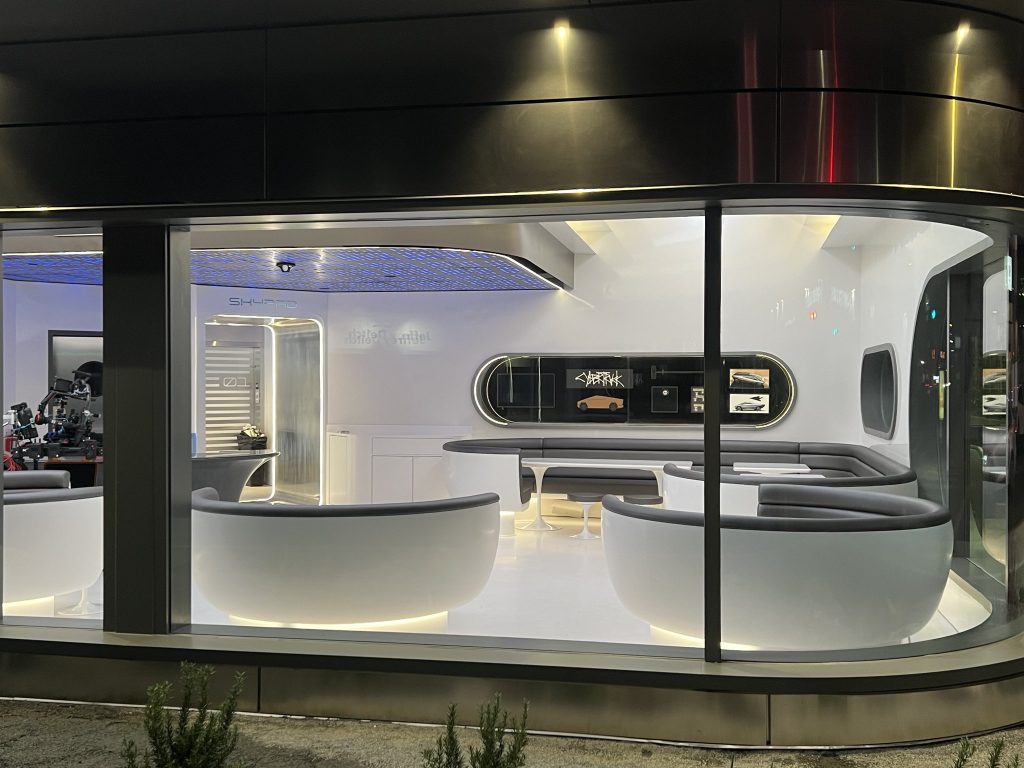
Credit: Brad Goldberg (via Sawyer Merritt on X)
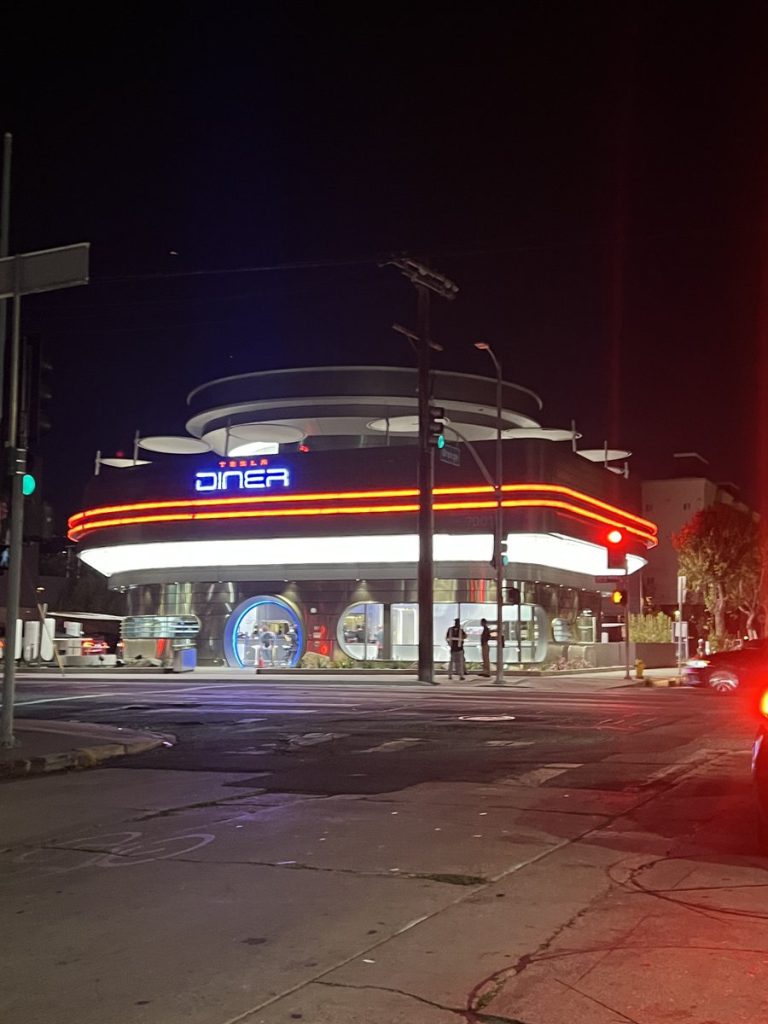
Credit: Brad Goldberg (via Sawyer Merritt on X)
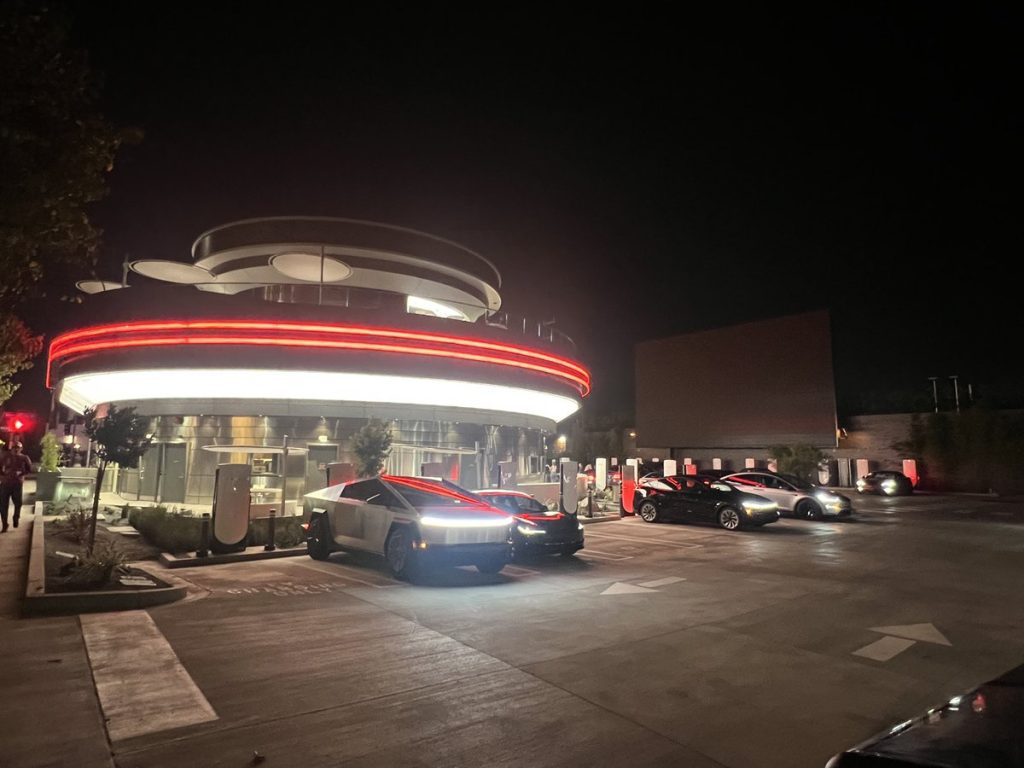
Credit: Brad Goldberg (via Sawyer Merritt on X)
READ MORE ON TESLA’S LA DINER: Tesla readies Drive-In Diner Supercharger for launch with app inclusion
When will the Tesla Diner open to external customers?
While it’s still not open to external customers yet, the news again suggests that the company could be close to an official opening date. Tesla first broke ground on the Diner in September 2023, after receiving a wave of building permit approvals throughout that year. Teslarati also covered much of the construction progress throughout last year, including when crews installed the first and second drive-in screens.
Located at 7001 West Santa Monica Boulevard, the idea was first discussed in 2018 by Musk and a few others on Twitter, featuring 1950s rock and roll, waiters on roller skates, and drive-in movie theater screens playing clips from some of history’s best movies. Notably, the photos of the front doors also show that the site will be open 24 hours a day, 7 days a week, whenever it does end up opening.
Tesla’s progress on Supercharger with diner, drive-in seen in aerial footage
-

 Elon Musk2 weeks ago
Elon Musk2 weeks agoTesla investors will be shocked by Jim Cramer’s latest assessment
-

 News2 days ago
News2 days agoTesla debuts hands-free Grok AI with update 2025.26: What you need to know
-

 Elon Musk4 days ago
Elon Musk4 days agoxAI launches Grok 4 with new $300/month SuperGrok Heavy subscription
-

 Elon Musk6 days ago
Elon Musk6 days agoElon Musk confirms Grok 4 launch on July 9 with livestream event
-

 News1 week ago
News1 week agoTesla Model 3 ranks as the safest new car in Europe for 2025, per Euro NCAP tests
-

 Elon Musk2 weeks ago
Elon Musk2 weeks agoxAI’s Memphis data center receives air permit despite community criticism
-

 News4 days ago
News4 days agoTesla begins Robotaxi certification push in Arizona: report
-

 Elon Musk2 weeks ago
Elon Musk2 weeks agoTesla scrambles after Musk sidekick exit, CEO takes over sales

















